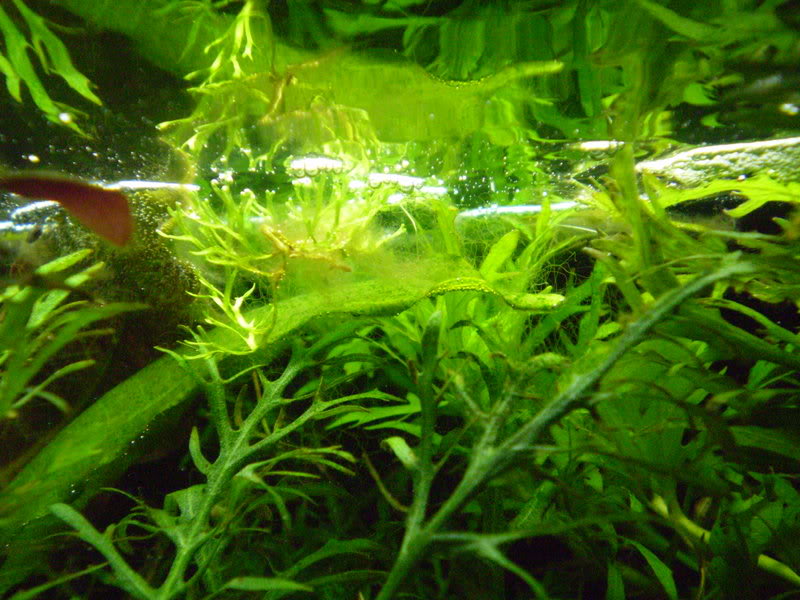Ever wonder what is that floating thing in your tanks? Every aquarist’s nightmare is having algae that build up in their tanks. Everyone is looking for a solution on how to deal with algae. Rhizoclonium, a type of algae, is a perfect example of this problem.
If you notice a small clump of green hair-like things in your aquarium, maybe that is Rhizoclonium Algae. This type of algae thrives mostly in saltwater aquariums. Although, to be fair, almost all algae that stay in your tank makes your tank look messy and dirty.
In this article, we will discuss Rhizoclonium algae, what causes it, and how you can rid your tank of this problem.
Table of Contents
What is Rhizoclonium?
Rhizoclonium is a single-celled organism that can propagate in your tanks. Their length can go up to a couple of centimeters.
Although they won’t stick to surfaces like other algae, they can propagate in stones and near glasses. The texture is soft and slimy when you’re trying to remove it from your tank.
Everyone is frustrated when finding this type of algae in their tank since it is not what they want to have when regulating their aquarium. Luckily, it’s not something to be alarmed about since it is easy to remove and clean from the tank. Preventing it is easier since after you do preventive measures, the Rhizoclonium’s appearance will be less or nonexistent.
Is Rhizoclonium bad?

Algae, in general, are not automatically bad.
In more specific cases, it actually depends on the amount of algae in your tank. Rhizoclonium is not exempted from that statement. It can make your aquarium unpleasant to look at with all these algae floating everywhere.
Rhizoclonium is also easy to remove since it does not disintegrate when you’re trying to pick it up from your tanks. Rhizocolonium is also edible so fishes and other organisms can feast on it. The only time these algae can be bad for your tanks is when it overrun the whole tank and steal the oxygen from your fishers.
What causes Rhizoclonium?
Rhizoclonium is a type of algae that propagates in low nutrient areas. The first thing that is suspected when you have algae in your tank is inconsistent maintenance of the aquarium. It is also said that low carbon dioxide levels can make Rhizoclonium thrive in your aquarium. Low circulation of water is also connected to the number of algae in the aquarium.
Iron levels on the aquarium are also being determined if it got something to do with the rising population of Rhizoclonium algae. Phosphate also has an impact on the propagation of algae in the tanks. It is currently being experimented with that high levels of light have an impact on the spread and propagation of the algae.
What eats Rhizoclonium algae?
Fishes and other organisms have been eating algae for snacks. Herbivore fishes are the main consumers of Rhizoclonium. They can just chomp right on it since it is floating on the tank rather than stuck on a surface like other types of algae. Shrimps are also an avid eater of Rhizoclonium. Snails have these algae on the list of their dietary food too.
How to get rid of Rhizoclonium

The simple way and less efficient way to get rid of Rhizoclonium is to pick it up manually from your tank. Doing a water change can also get the algae out of the tank. Most aquarists use a hose to siphon the floating algae in the tank. This procedure will remove most of the algae that float in the open water.
Other aquarists use a product that removes algae including Excel and Easycarbo. Changing the tank is the last thing you have to do when dealing with this algae.
How to prevent Rhizoclonium algae
The best way to prevent Rhizoclonium algae is to be consistent in keeping your tank regulated. Having a water change 2-3 times every week will definitely help in preventing algae build-up. Adjusting your carbon dioxide levels can also help in preventing the algae to multiply. Iron and phosphate levels should be monitored to avoid the algae to thrive
Proportional amounts of light should be followed in preventing Rhizoclonium algae meaning that the side amount of light you are using should be proportionate to the size of the tank. Make sure that the water circulation in your aquarium is optimal meaning that the water must be moving since Rhizoclonium algae love low circulation of water.
For more aquarium tips, don’t forget to check out our blog!